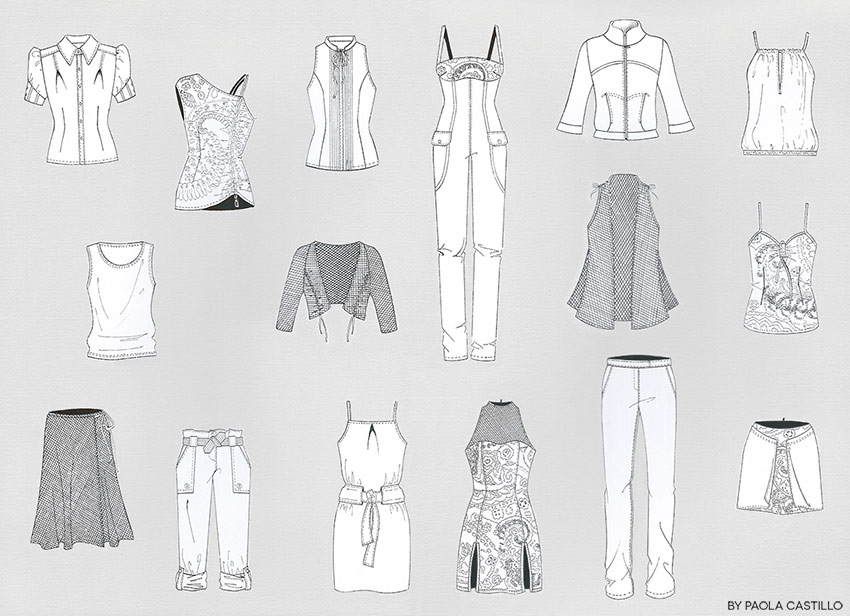Your cart is currently empty!
FASHION INDUSTRY | WHAT DOES FASHION COLLECTION CONSIST OF?
Would you like to know what roles does a fashion designer play in the Fashion Industry?
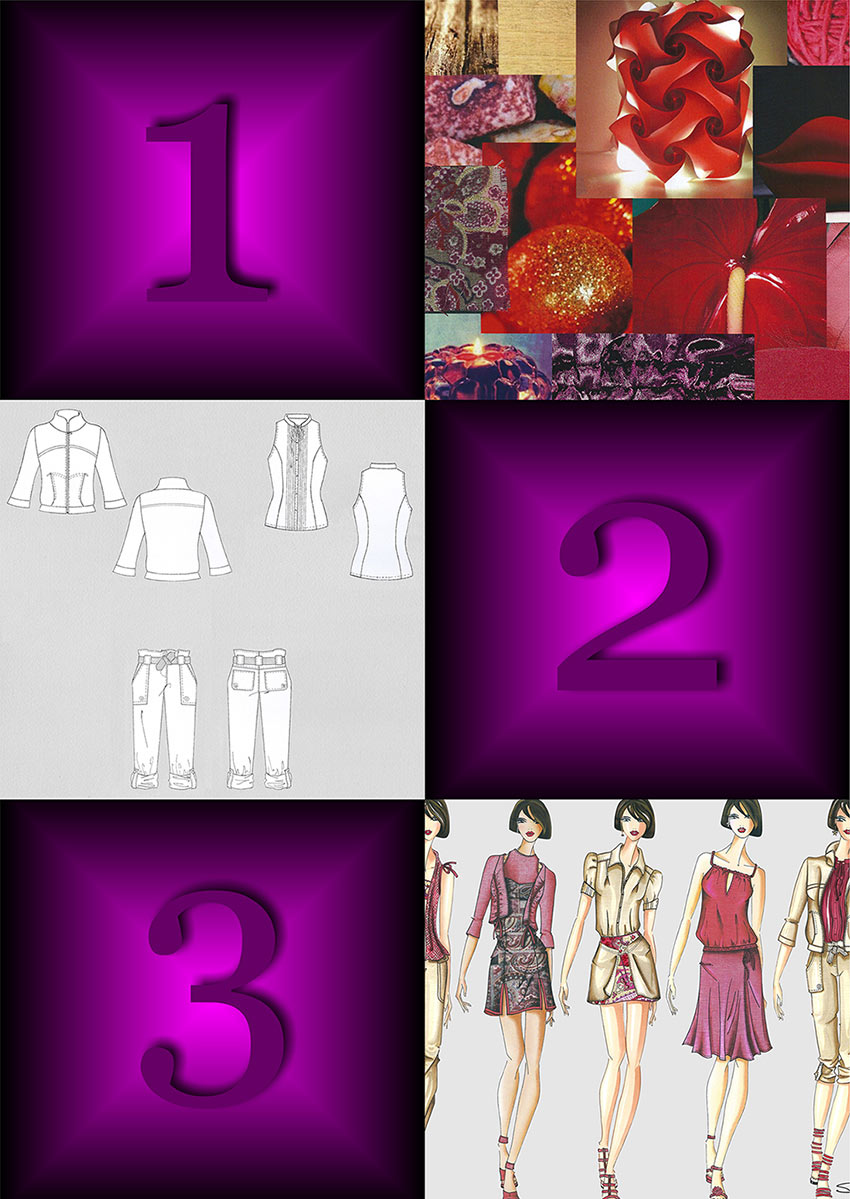
As a designer in the fashion industry, Below is a summary with the examples of the most outstanding activities that must be performed simultaneously during the creation of a fashion collection Prêt-à-Porter. I wanted to divide them into three phases because it is so I’ve usually worked within companies, then, I can say that this is the standard procedure.
First Phase to Collection Development in the Fashion Industry:
- We begin with gathering the information and materials selection.
As a starting point we should collect all the information needed to do the briefing collection, we do this with the definition of target. You can find more detailed information about this topic in the article: How to Create a Fashion Collection: Step by Step Illustrated Explanation.
It is important to keep in mind:
- The analysis of sales data from previous collections.
- The study of current fashion trends (in fits, colors, fabrics and accessories).
- Research from our competition.
- Analysis of our budget.
- The definition of timetable.
Then we select and define the raw material that we will use to develop our designs.
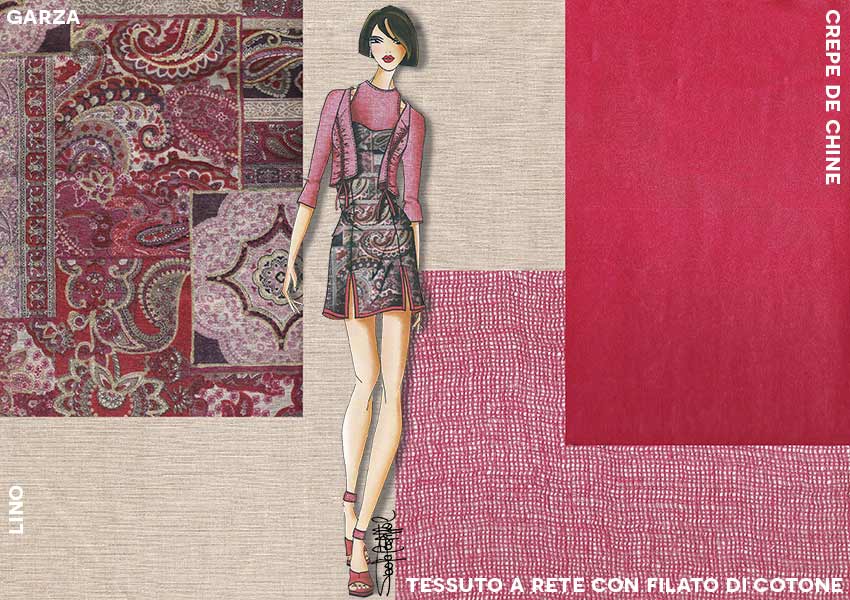
With all the information collected we can write our concept of collection and then we can develop the Mood Board, activities that will serve as a reference and when we will support our collection to the customers. It is very important that the collage of images, fabrics and/or materials have as much information as possible related to the project.
Below you can see an example of the color card, concept of collection and mood board:
COLOR CARD
CONCEPT OF COLLECTION
Safari Chic – Spring/Summer 2019
Women with an overflowing spirit of adventure, lovers bold new challenges and travelling, are the inspiration for this collection. With a high/medium-high parameters, the keyword is India and the main concept, functionality. Silhouettes start with simple shapes, but the little details on the cuts and the combination of materials that make the difference. About textile bases are vivid and bright colours that give a romantic air like red cherry in a silk crepe and cotton mesh with small violet accents and earth gold tones thread in a paisley lightweight linen stamped, these tones are mixed and blended with the beige cotton batiste fabric.
MOODBOARD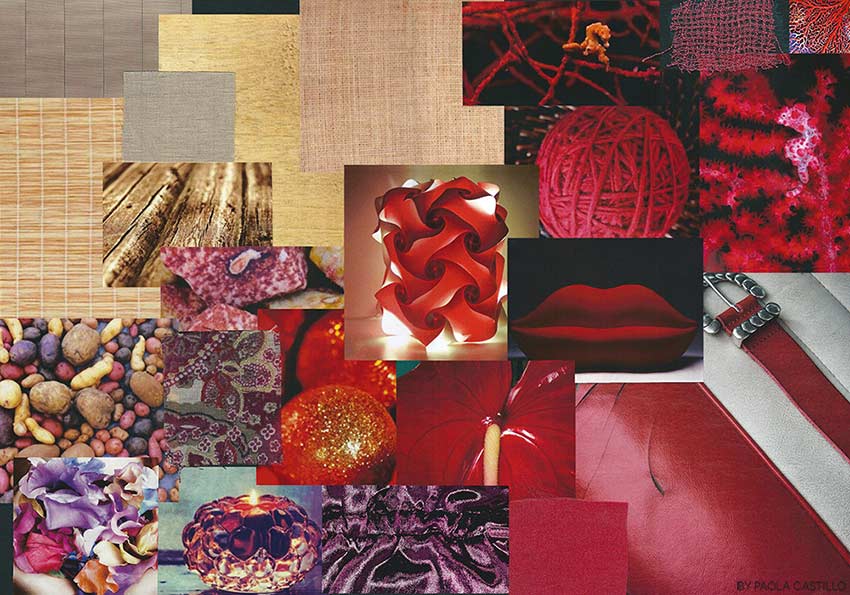
Second Phase to Collection Development in the Fashion Industry:
- We continue with the stage of creativity (that personally I love) , where we should Designing technical drawings, Creating technical sheets and developing Fashion Illustration.
Has come the time to structuring our Pret-a-Porter collection, which usually is composed of 50/60 sets of total looks, equivalent to 120/150 individual garments (the amount depends on the budget and needs of the Company or Brand for which we are working). The Total Looks are divided into sub-groups of mini collections that are to be developed simultaneously and without losing sight of the overall approach to the complete collection. This fragmentation will facilitate the management especially in the production phase or if we are making flash of Pronto Moda to shop windows every 2 or 3 weeks.
Before starting to design, we must remember that clothes should be able to be interchanged, because it is the best way to facilitate their future marketing. After approving the final technical drawings (or often referred to as “flat drawings”), we can continue the development of the fashion illustrations, which will allow better appreciate the colors, textures and characteristics of fabrics, show the possible combinations of garments and facilitate our vision of the state each sub-group of the collection. Parallel we must create the technical sheets of each piece with all necessary indications to develop the pattern pieces and make each garment. The following images of technical drawings and fashion Illustrations are a small sample of a sub-group of collection, consisting of 5 total looks:
TECHNICAL DRAWINGS
After approving the flat drawings we can continue with the fashion illustrations, which will allow us to better appreciate the colors, textures and characteristics of the fabrics, show the possible combinations of the garments and facilitate our vision of the state of each sub-group of the collection.
Download our design tool to create your technical drawings and fashion illustrations by hand or using computer:
- Female Fashion Figure Templates in vector and JPG format.
- Male Fashion Figure Templates in vector and JPG format.
- Templates to create a footwear line: different styles of shoes + feet silhouettes.
FASHION ILLUSTRATIONS
At the same time, we must create the collection plan and the technical sheets of each piece with all the necessary indications to be able to develop the patterns and make each garment. Let’s see:
COLLECTION PLAN
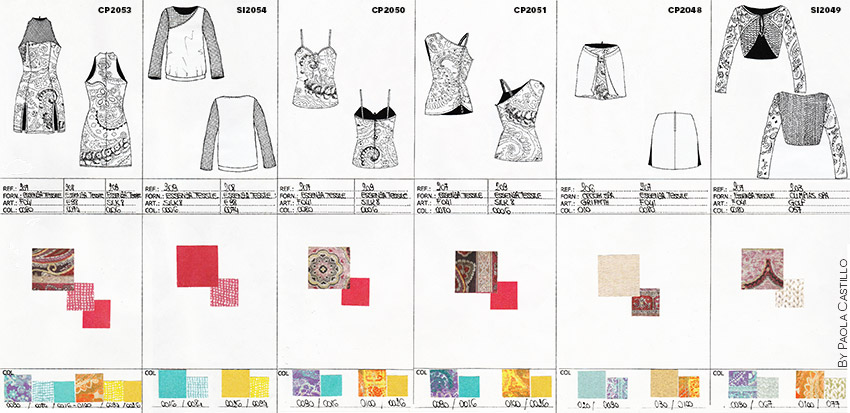
The collection plan is a very useful tool that will allow us to have control of each of the garments in the production face.
TECHNICAL SHEETS
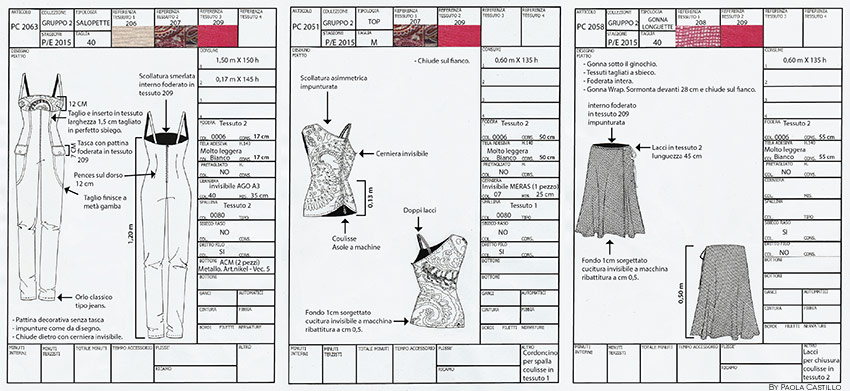
The technical sheets are one of the most important activities in this second step, as they contain all the details and characteristics of the garments that will be used by the pattern maker and the garment maker to make the product.
Third Phase to Collection Development in the Fashion Industry:
- Finally we are in the third stage, where we develop the samples and proceed with production.
Now we must make the initial samples and this requires purchase raw material and begin to estimate costs. Later, when we receive the first prototypes, we must make the measurements of sizing where evaluated the fit, the stitchings and accessories of each piece. After approval of the garments with their corrections we dedicate to the development of the final samples with the corresponding catalogs of fabrics and color charts, which will be given to customers during the sales meeting.
After receiving the purchase orders with the sizing curve, we should calculate the consumption of raw material and immediately schedule and/or buy all the supplies needed to begin the process of production. For this last phase is essential to update and correct the technical sheets thus avoid future problems and likewise we fulfill to our clients with deadlines. Nonetheless, when we think had finished our work… now it’s time we began monitoring the production with their inevitable setbacks of last minute and to keeping up the pace… also has come the time to prepare the information we began to prepare the information for the next season… and this way began the process again.
This information I have provided (pretty summarized), is based on my professional experience and I must clarify that often vary the order and the number of processes or activities in accordance with the characteristics and requirements of each company. To not make too long this post I decided to summarize with the activities which more frequently developed when I working for companies. However, there is a part of special processes such as laundries, printing, embroidery and a series activities that also make fundamental part of our work. For now, I hope all this has been helpful for those who want to have some knowledge about this wonderful profession.
CONCLUSIONS
A Fashion Designer needs to have a wide range of skills to be able to fully practice this profession. I’m not talking about just having a good eye for fashion, skill and good taste in combining colors and textures or passion for what you do.
All of this is very important, but you must also have excellent communication skills, for example to expose collections to sales representatives, to negotiate prices with suppliers, get new customers, work on productions with third-party garment manufacturers or to solve problems of the clients.
It is also necessary to have basic knowledge in economics and fashion marketing. This will facilitate and save us time and money.
In addition, it is necessary to stay updated on fashion trends, new technologies and the latest specializations in this profession. Also in general culture, from politics to art (just to give you an example). This will allow us to meet and meet the customer’s needs and be competitive.
Having good contacts in the environment will open doors for us and provide an excellent exchange of ideas to our profession and life.
Other important points are the ability to master stress and work under pressure, accept criticism, have discipline and organization and above all the desire to work very hard.
I leave you one last observation before you start creating a fashion collection: Remember that in this profession you do not design for yourself, you must design for your clients.
See you soon and thanks for visiting my blog!
